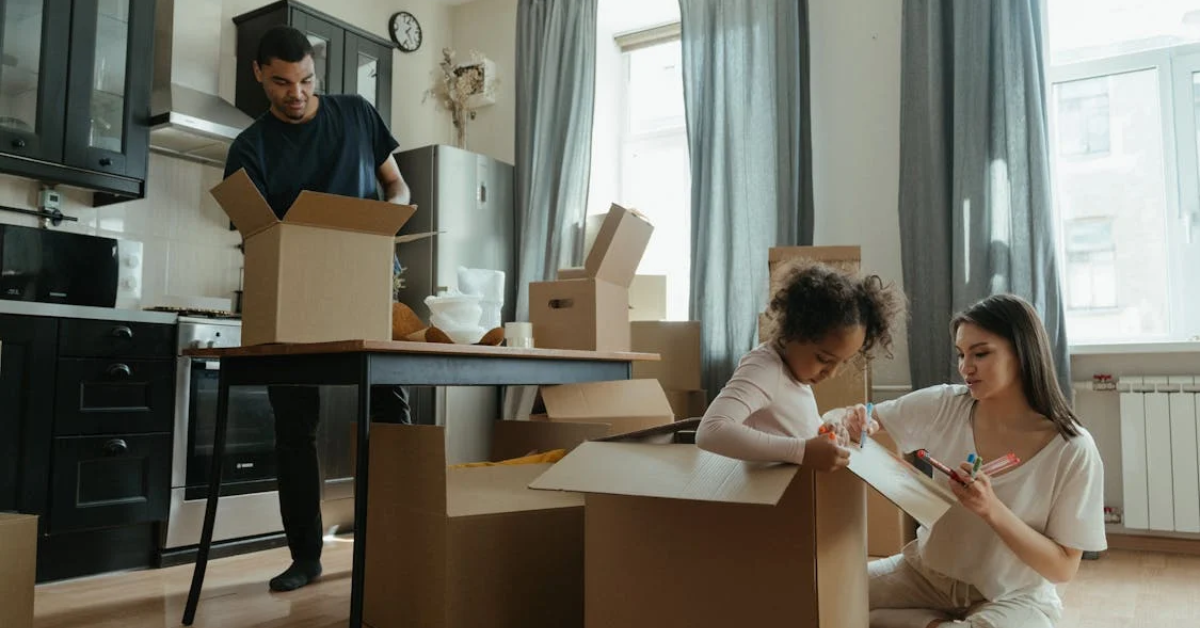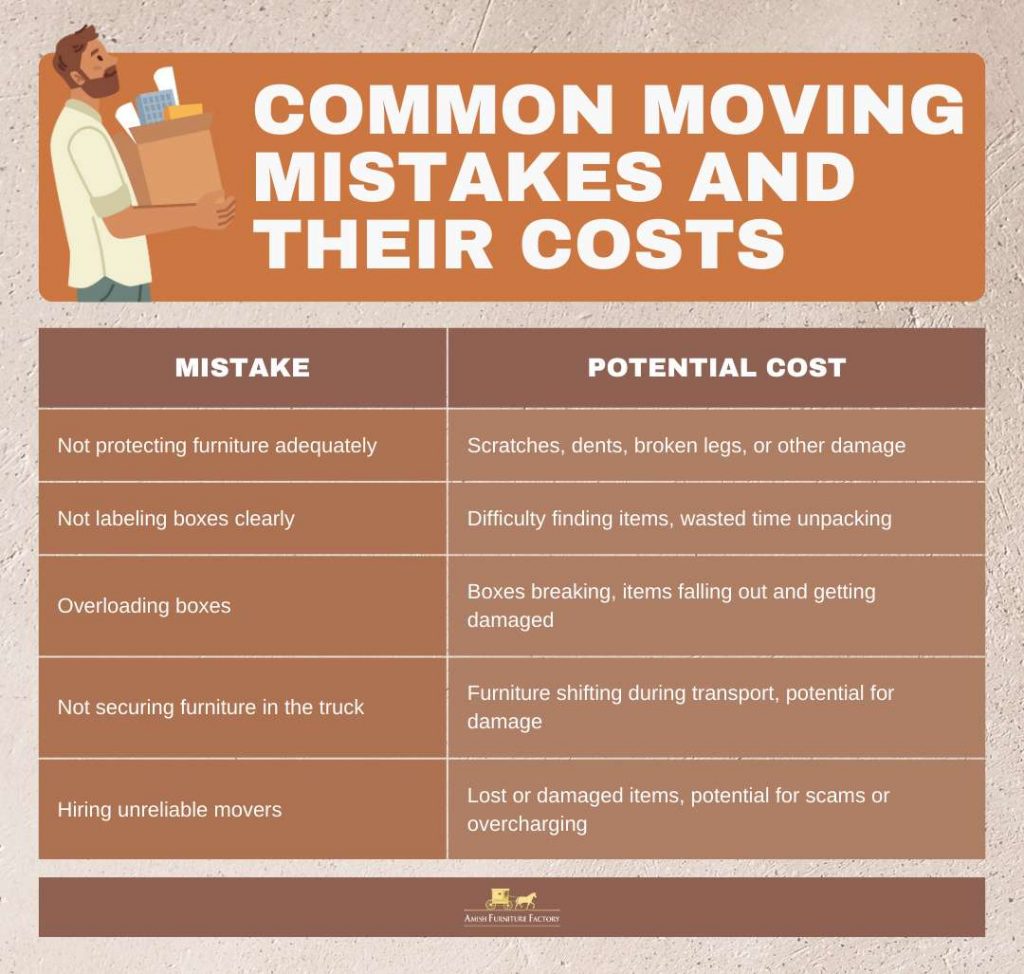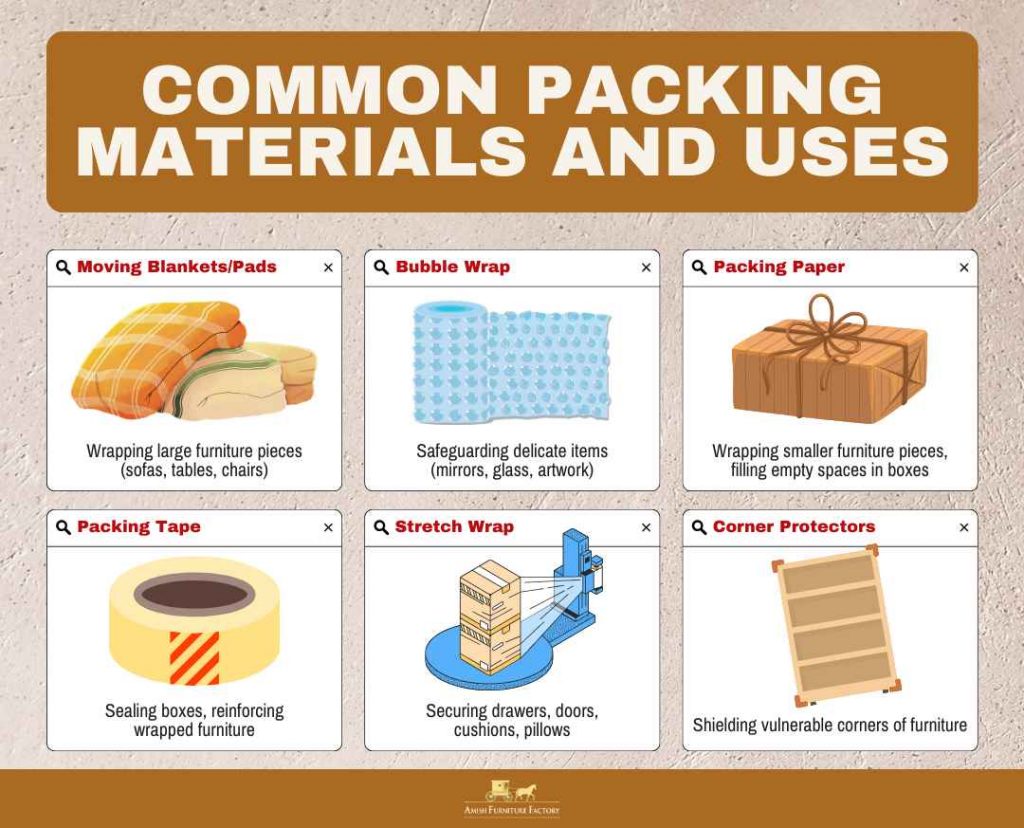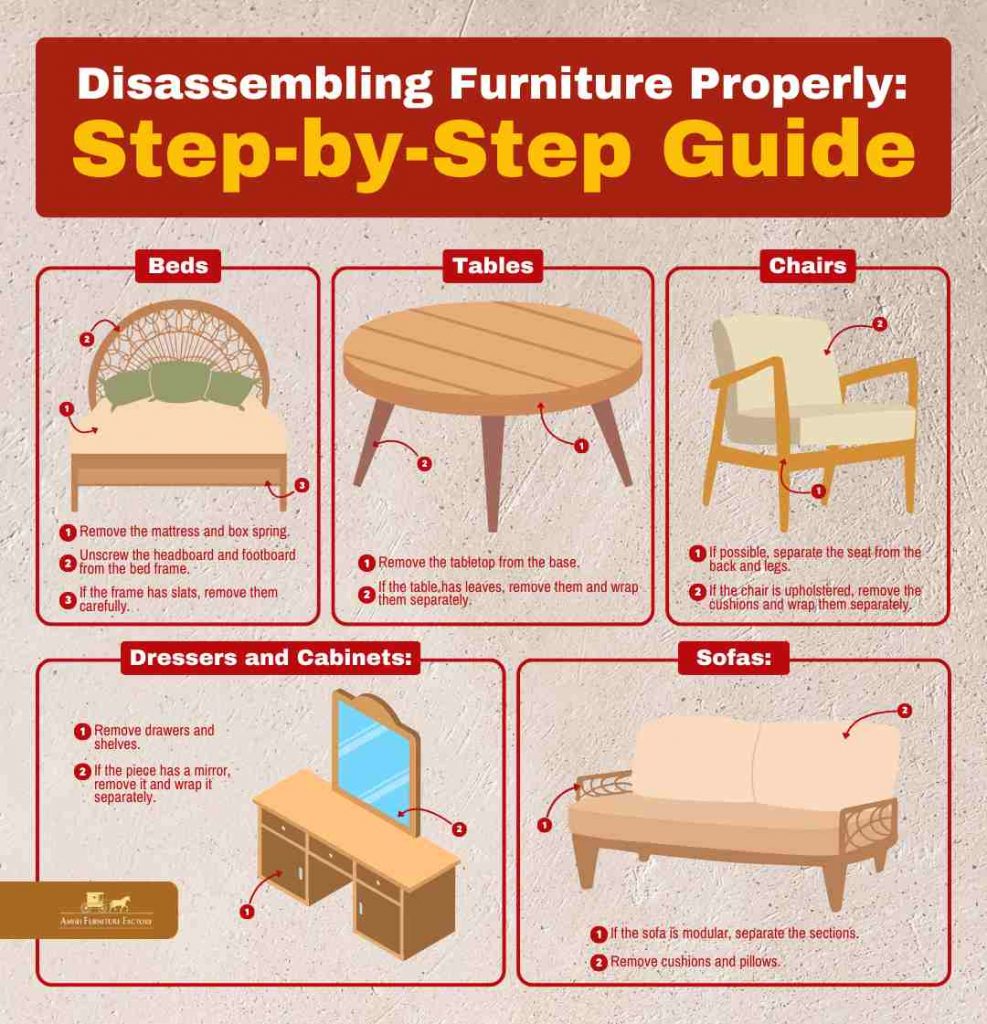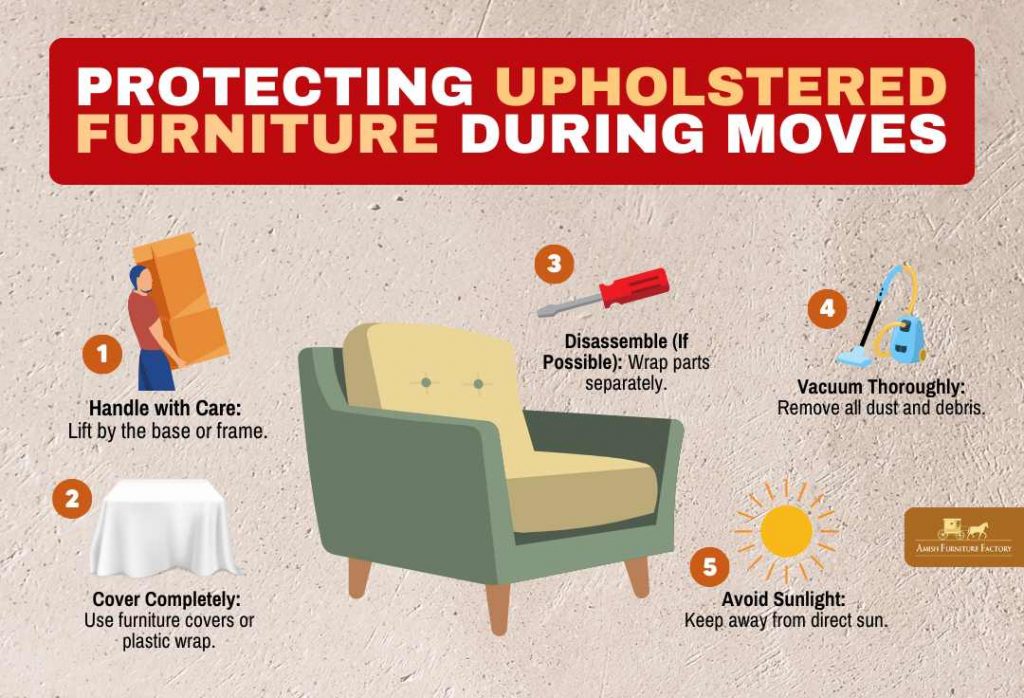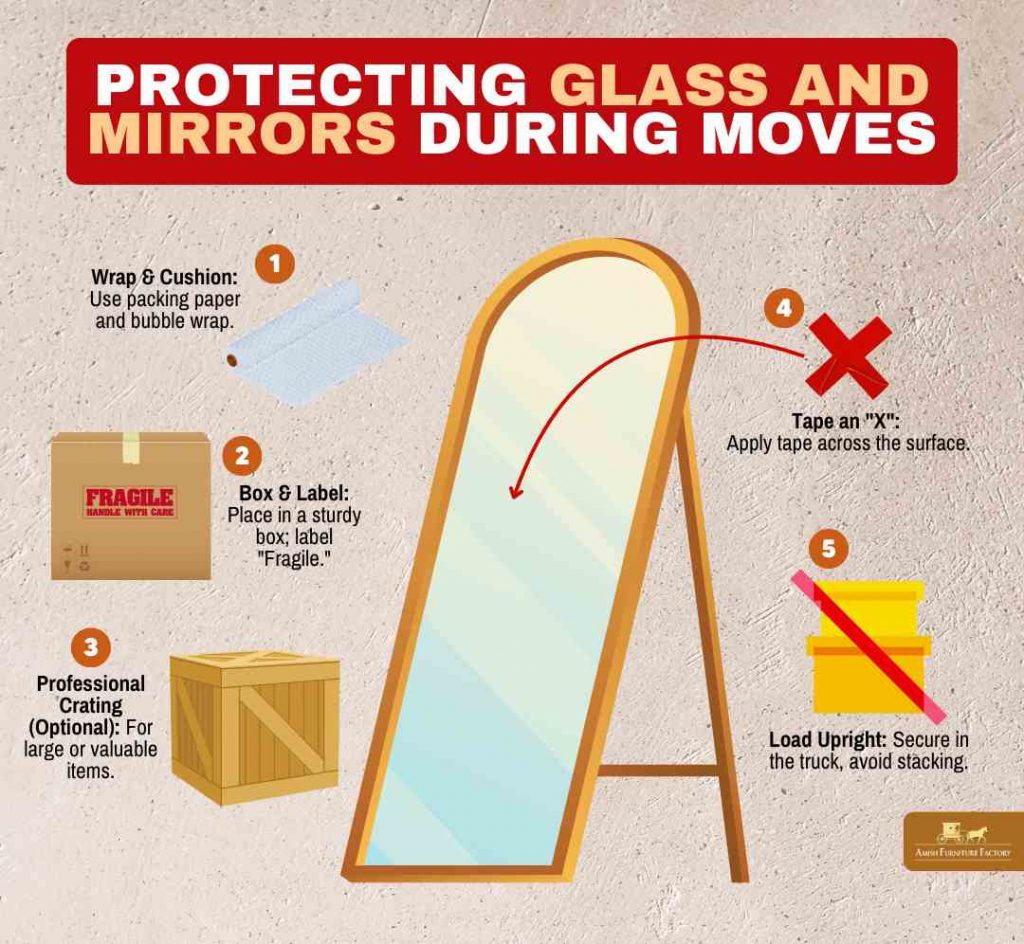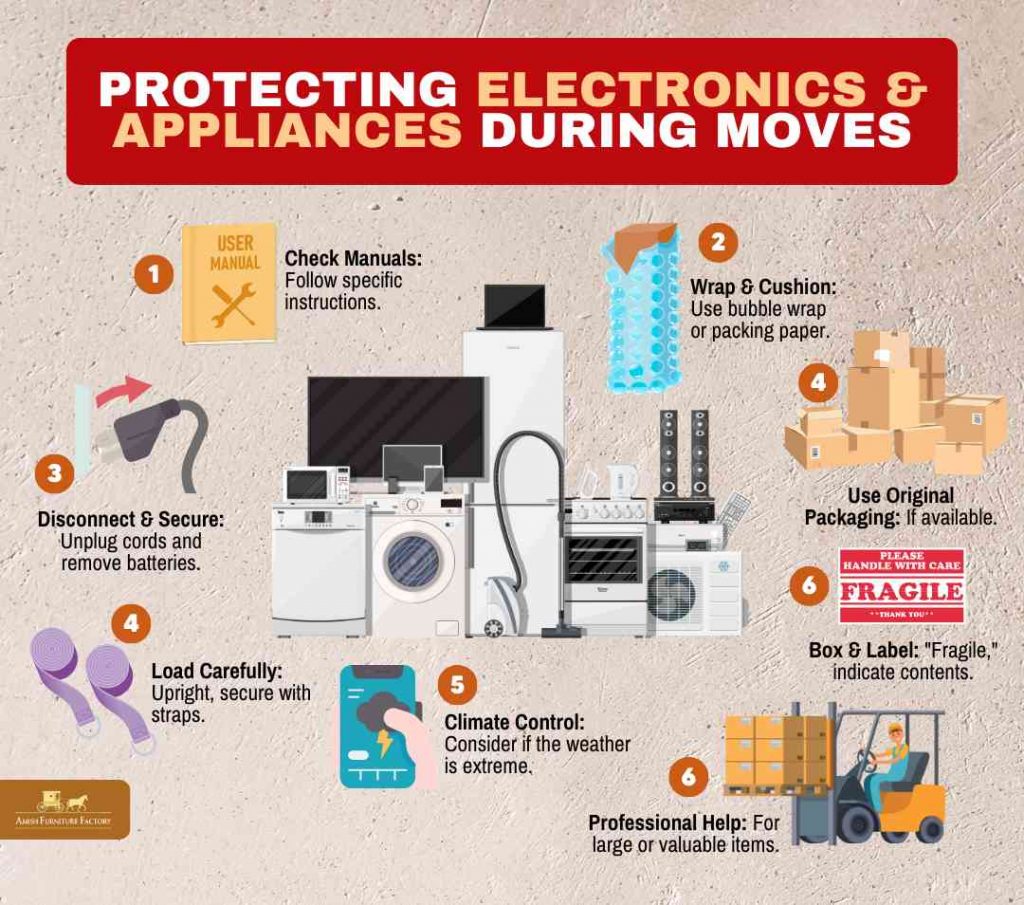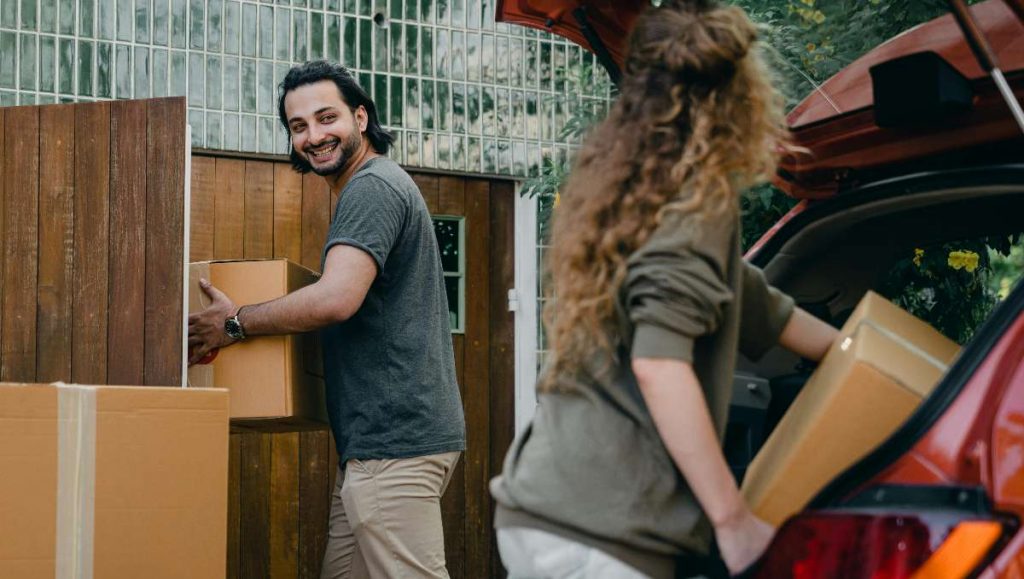
Moving day is stressful enough without the added worry of your cherished furniture getting dinged, scratched, or worse. Damaged furniture can take an emotional and financial toll, making it crucial to take proactive steps to prevent such mishaps during a move.
Key Takeaways
- Planning is key. Early preparation is crucial to prevent furniture damage during a move.
- Choose the right materials. Invest in quality packing supplies tailored to different furniture types.
- Disassemble strategically. Taking apart furniture reduces damage risk and eases transport.
- Handle with care. Proper lifting techniques and tools like dollies are essential.
- Protect fragile items. Use specific methods for glass, mirrors, electronics, and appliances.
- Consider hiring movers for valuable or delicate items.
This article shares expert tips and tricks honed from years of experience to help you safeguard your valuable pieces throughout the moving process. Whether you’re moving across town or across the country, these insights will ensure your Amish furniture arrives at your new home in the same pristine condition it left.
The Importance of Planning Ahead
The key to a smooth and damage-free move lies in meticulous planning. Starting early allows ample time to research and gather the necessary packing materials, such as sturdy boxes, bubble wrap, furniture pads, and packing tape. With a well-thought-out plan, you can systematically disassemble furniture, ensuring no screws or small parts are misplaced.
Planning also helps prevent last-minute mistakes, like rushing to pack or hiring unreliable movers. A lack of preparation often leads to accidents, such as dropped or improperly secured furniture. Many moving-related injuries are common, and many could be prevented with better planning. By mapping out your move in advance, you can strategically allocate time and resources, minimizing the risk of mishaps and ensuring the safety of your belongings.
Choosing the Right Packing Materials
Packing materials play a crucial role in protecting furniture during a move. The right materials can make all the difference between a piece arriving unscathed and one damaged beyond repair.
For Harpreet Saini, CEO at We Buy Houses in Metro Detroit:
“Proper wrapping technique makes all the difference. I’ve seen beautiful wooden tables ruined by direct contact with moving blankets. Always use clean sheets as the first layer before adding blankets. The sheet prevents the blanket’s rough texture from scratching delicate surfaces.”
Here’s a breakdown of essential packing supplies:
- Moving blankets/pads – These thick, quilted fabrics provide cushioning and protection against scratches and dents. They are essential for wrapping large furniture like sofas, dining room tables, and chairs.
- Bubble wrap – This versatile material is excellent for safeguarding delicate items like mirrors, glass tabletops, and artwork. It provides an extra layer of protection against impacts and vibrations during transport.
- Packing paper – This unprinted newsprint paper is ideal for wrapping smaller furniture pieces and filling empty spaces in boxes to prevent items from shifting during the move.
- Packing tape – Invest in high-quality packing tape to seal boxes securely and reinforce wrapped furniture. It ensures that your belongings stay protected throughout the journey.
- Stretch wrap – This thin plastic film is perfect for securing drawers and doors on furniture to prevent them from opening during transit. It also helps to keep loose items like cushions and pillows attached to the furniture.
- Corner protectors – These cardboard or foam protectors shield the vulnerable corners of furniture from bumps and impacts, reducing the risk of damage.
In addition to the materials listed above, consider using specialized packing supplies for delicate or valuable items. For instance, custom-made crates offer superior protection for antique furniture, while acid-free tissue paper is essential for wrapping fragile items like porcelain and crystal.
Shu Saito, from All Filters, has an interesting tip:
“Pool noodles are an inexpensive yet brilliant way to shield sharp edges or delicate corners on furniture. Simply cut them lengthwise and slip them over the edges of tables, chairs, or shelving. This protects both your furniture and walls from scratches during transit.”
Disassembling Furniture Properly
Disassembling large or complex furniture pieces before a move can significantly reduce the risk of damage during transport. It also makes it easier to maneuver furniture through doorways and hallways. Here’s a step-by-step guide on how to disassemble common types of furniture:
- Gather your tools and clean the area. Before you start, ensure you have the necessary tools, including a screwdriver, wrench, pliers, and a rubber mallet. Create a spacious work area free of obstacles to prevent accidental damage to the furniture.
- Prepare the furniture. Empty drawers, cabinets, and shelves. Remove any cushions or other accessories. If possible, detach fragile parts like glass panels or mirrors for safekeeping.
- Document the process. Before you begin disassembling, take photos of the furniture from different angles. This will serve as a visual reference during reassembly.
- Start with the obvious and work systematically. Begin by removing any easily detachable parts, such as knobs, handles, legs, or shelves. Follow a logical order of disassembly, typically working from the top down or from the outside in.
- Store hardware carefully. Keep all screws, bolts, nuts, and washers in separate labeled bags or containers to make reassembly much smoother.
- Wrap and protect. Once disassembled, wrap each piece in bubble wrap, blankets, or furniture pads to protect it during transport or storage. Label each package with its contents and destination.
- Reassemble with confidence. When it’s time to assemble the furniture, refer to your photos, diagram, and labeled parts. Take your time and follow the steps in reverse order.
Aman Chopra, Marketing Manager at Stallion Express, shares a helpful tip:
“Disassembling furniture wherever feasible has a big impact. Detaching legs or components minimizes joint stress and makes products simpler to handle. Labeled bags attached to furniture prevent screws and hardware from being lost.”
Organizing and Labeling
A well-organized and clearly labeled moving system is crucial for a stress-free unpacking experience. As you pack each box, label it with the room it belongs to and a brief description of its contents. This will make it easier for you and the movers to place boxes in the correct rooms upon arrival at your new home.
Consider using a color-coded system for labeling, assigning a different color to each room. This visual aid can further streamline the unpacking process. Additionally, number each box and create a master inventory list that details its contents. This list will be invaluable when you’re looking for specific items.
For fragile items, label the boxes prominently with “Fragile” and arrows indicating which side should be kept up. Consider packing an “essentials box” containing items you’ll need immediately upon arrival, such as toiletries, medications, a change of clothes, and important documents.
Protecting Different Types of Furniture During Moves
Furniture comes in various shapes, sizes, and materials, requiring specific care during a move. To ensure your prized possessions arrive in pristine condition, it’s essential to tailor your packing and protection strategies to the type of furniture you’re transporting.
Wooden Furniture
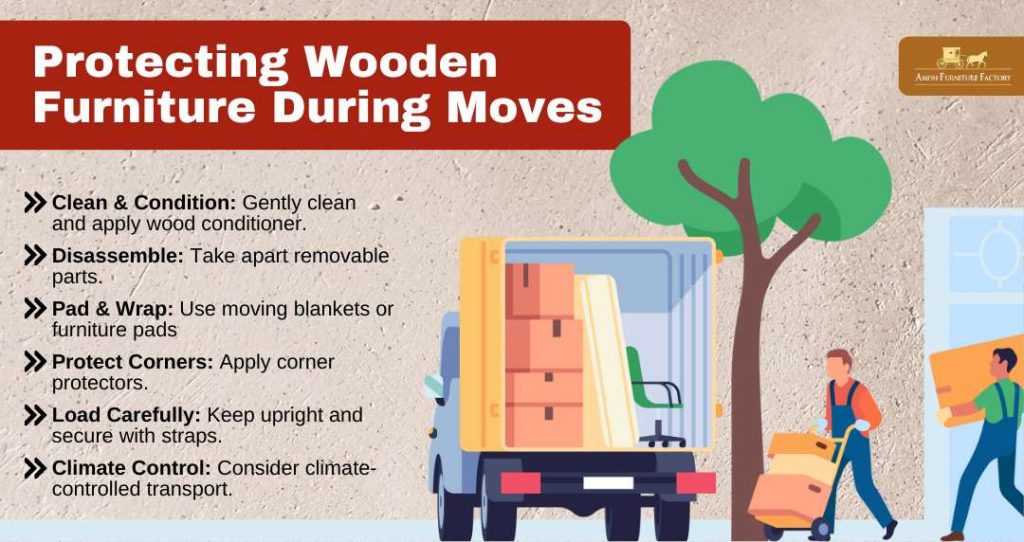
Wooden furniture, particularly antique or handcrafted pieces, demands special attention due to its vulnerability to scratches, dents, and moisture damage. Here’s how to safeguard your wooden furniture during a move:
- Cleaning and conditioning – Thoroughly clean the furniture with a soft cloth and a mild wood cleaner before packing. If the wood appears dry, apply a thin coat of wood conditioner to protect it from moisture fluctuations during transit.
- Disassembly – Disassemble any removable parts, such as table legs, shelves, or drawers. This reduces the risk of these parts getting damaged and makes the furniture lighter and easier to move.
- Padding and wrapping – Wrap each piece individually with moving blankets or furniture pads. Secure the padding with packing tape to prevent it from slipping during transport.
- Corner protection – Use corner protectors made of cardboard or foam to shield the corners from bumps and impacts.
- Loading and transport – When loading wooden furniture onto the moving truck, place it upright and secure it with straps to prevent it from shifting during transit. Avoid stacking heavy items on top of wooden furniture.
- Climate control – If you’re moving during extreme weather conditions, consider using a climate-controlled truck to protect the furniture from temperature and humidity fluctuations.
Upholstered Furniture
With its delicate fabrics and intricate details, upholstered furniture requires special care to prevent stains, tears, and fading during a move. Here’s how to protect your upholstered pieces:
- Vacuum thoroughly – Before packing, vacuum the entire furniture surface to remove dust, dirt, and debris that could damage the fabric during transit.
- Cover with protective materials – Use furniture covers, plastic wrap, or old sheets to shield the upholstery from stains and accidental spills. Secure the covers with packing tape to keep them in place during the move.
- Disassemble if possible – If the upholstered furniture has removable cushions, legs, or other parts, disassemble them for easier packing and transport. Wrap each part individually with protective materials.
- Avoid direct sunlight – When loading and unloading the furniture, avoid exposing it to direct sunlight for extended periods, as this can cause the fabric to fade and discolor.
- Handle with care – Lift the furniture by its base or frame, not by the arms or back, to prevent stress on the upholstery and joinery.
Glass and Mirrors
Glass tabletops, mirrors, and other glass elements are among the most fragile items in a home, making them highly susceptible to damage during a move. To prevent cracks, chips, or shattering, follow these precautions:
- Tape an “X” – Apply masking or painter’s tape across the surface of the glass in an “X” pattern. This helps to hold the glass together if it cracks and prevents it from shattering into dangerous shards.
- Wrap with protective materials – Wrap the glass item in several layers of packing paper, then bubble wrap, with the bubbles facing inward. This provides cushioning and shock absorption during transit.
- Box and label – Place the wrapped glass item in a sturdy box slightly larger than the item itself. Fill any empty spaces with packing peanuts or crumpled paper to prevent movement. Label the box clearly as “Fragile – Glass” and indicate which side is up.
- Load carefully – When loading the box onto the moving truck, place it upright and secure it with straps to prevent it from shifting. Avoid stacking heavy items on top of the box.
- Consider professional crating – For large or valuable glass items, consider having them professionally crated. This provides the highest level of protection during a move.
Electronics and Appliances
Moving electronics and appliances requires extra caution due to their delicate internal components and sensitivity to impacts. Here’s how to ensure their safe transport:
- Refer to manuals – Consult the user manuals for specific instructions on preparing each item for a move. This may include unplugging, removing batteries, securing moving parts, or resetting settings.
- Original packaging – Whenever possible, use the original packaging for electronics and appliances. These boxes are designed to protect the items during transit and often include foam inserts and compartments for added security.
- Disconnect and secure – Unplug all cords and cables and secure them with twist ties or tape to prevent tangling. If the item has removable parts, like shelves or trays, take them out and pack them separately.
- Wrap and cushion – Wrap each item individually with bubble wrap or packing paper to provide cushioning against bumps and vibrations. For larger appliances, use moving blankets for additional protection.
- Box and label – Place the wrapped items in sturdy boxes, filling any empty spaces with packing peanuts or crumpled paper to prevent shifting. Label each box clearly with its contents and mark it as “Fragile.”
- Load with care – Load electronics and appliances onto the moving truck carefully, placing them upright and securing them with straps to prevent them from shifting during transit. Avoid stacking heavy items on top of them.
- Climate control – If you’re moving during extreme weather conditions, consider using a climate-controlled truck to protect the electronics from temperature and humidity fluctuations.
- Professional help – For large or valuable appliances, consider hiring professional movers who specialize in transporting electronics. They have the experience and equipment to handle these items safely.
Techniques for Safe Moving
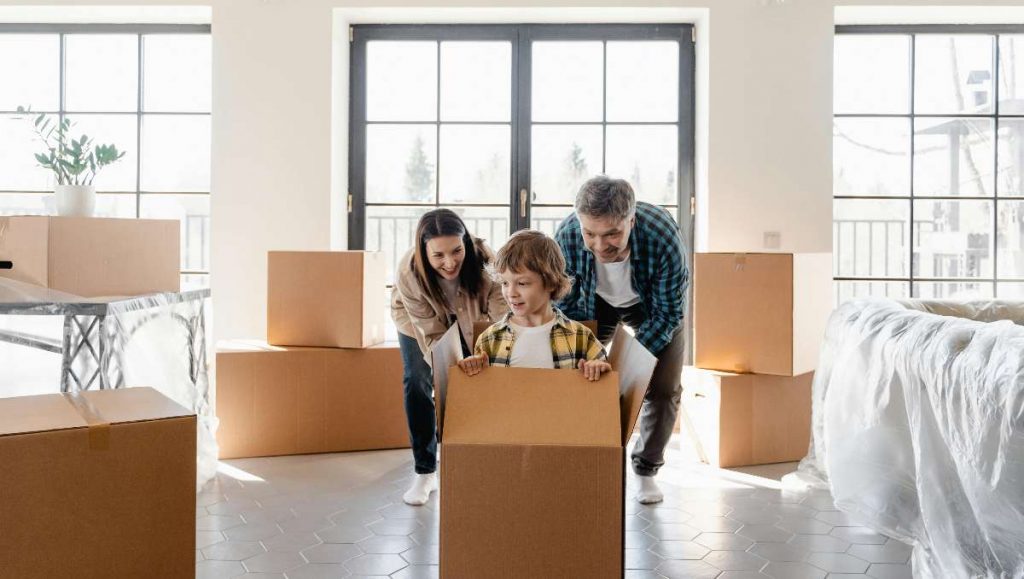
Safeguarding your furniture and yourself during a move requires careful attention to proper techniques. Lifting heavy objects should always be done by bending at the knees and using your legs, not your back. Keep the object close to your body and avoid twisting while lifting. If an item proves too heavy, don’t hesitate to ask for help.
When carrying furniture, use both hands to distribute the weight evenly and take breaks if needed, especially for longer distances. Dollies and straps are indispensable tools, making moving bulky pieces like appliances and large furniture easier and safer.
Teamwork is key to a successful move. Having a group of people working together can significantly reduce the risk of injury and damage. Assign tasks based on individual strengths and communicate clearly throughout the process.
Hiring Professional Movers
While a DIY move might seem cost-effective, the expertise and peace of mind offered by professional movers often outweigh the potential savings. Expert movers possess the knowledge and experience to handle your furniture with care, minimizing the risk of damage.
The advantages of hiring professionals extend beyond just the physical labor. They can also provide packing services, saving you time and effort. Additionally, reputable moving companies are insured, offering protection for your belongings in case of accidents or damage during transit.
When choosing a moving company, research is key. Look for companies with positive reviews and ratings from previous customers. Check if they are licensed and insured, and obtain written estimates from multiple companies to compare prices and services.
James from All House Clearances emphasizes:
“If you’re using professional movers, don’t be shy about asking them how they handle delicate or heavy pieces and what tools they use—it’s your furniture, after all.”
Inspecting and Documenting Furniture Condition
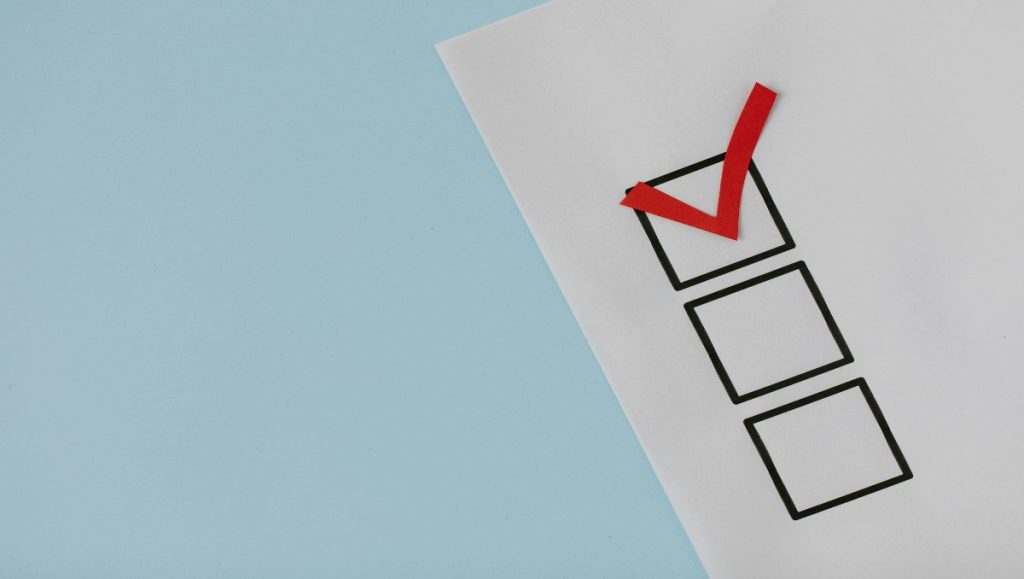
Before the move, thoroughly inspect each piece of furniture, noting any scratches, dents, or other imperfections. Take clear photos or videos of each item from different angles to document its pre-move condition. This documentation will be invaluable in case any damage occurs during transit and you need to file a claim with the moving company or your insurance provider.
After the move, re-inspect each piece of furniture and compare it to the pre-move documentation. If you notice any new damage, take photos or videos and promptly report it to the moving company. Having detailed documentation will strengthen your claim and help ensure a fair resolution.
If you are moving valuable or antique furniture, consider getting a professional appraisal before and after the move. This will provide an official record of the furniture’s condition and value, which can be helpful for insurance purposes.
The Bottom Line
Moving doesn’t have to be synonymous with furniture damage. By planning ahead, investing in the right packing materials, disassembling furniture properly, and employing safe moving techniques, you can ensure your cherished pieces arrive at your new home unscathed. Whether you’re handling the move yourself or enlisting professional help, remember that careful attention to detail is key.
Following the tips and guidelines outlined in this article, you can safeguard your furniture investment and avoid the stress and expense of dealing with damaged items. Don’t underestimate the power of preparation and the right tools. Your furniture will thank you for it!
FAQs
How do I protect my furniture during a move?
Protecting furniture during a move involves a multi-faceted approach. Start by planning and gathering the right packing materials, such as moving blankets, bubble wrap, and packing tape. Disassemble large or complex pieces to reduce the risk of damage during transport. Inspect and document the condition of your furniture before and after the move to identify any potential damage.
What packing materials are best for furniture?
The best packing materials for furniture depend on the type of furniture you’re moving. For wooden furniture, use moving blankets or furniture pads for cushioning and corner protectors for added security. Bubble wrap is ideal for protecting delicate items like glass tabletops and mirrors. Packing paper is versatile for wrapping smaller furniture pieces and filling empty spaces in boxes. Stretch wrap is useful for securing drawers and doors while packing tape is essential for sealing boxes and reinforcing wrapped furniture.
Should I disassemble my furniture before moving?
Disassembling large or complex furniture pieces is highly recommended to reduce the risk of damage during transit. It also makes furniture easier to maneuver through doorways and hallways. Refer to the furniture’s manual for instructions on disassembly, and remember to keep track of all screws and small parts.
Is it worth hiring professional movers?
Hiring professional movers can be a worthwhile investment, especially if you have valuable or delicate furniture. Professional movers have the experience and expertise to handle furniture with care, minimizing the risk of damage.
How can I ensure my furniture arrives undamaged?
To ensure your furniture arrives undamaged, follow these key steps: plan ahead, use proper packing materials and techniques, disassemble large pieces if possible, and hire professional movers if needed. Inspect and document the condition of your furniture before and after the move, and report any damage to the moving company immediately.
